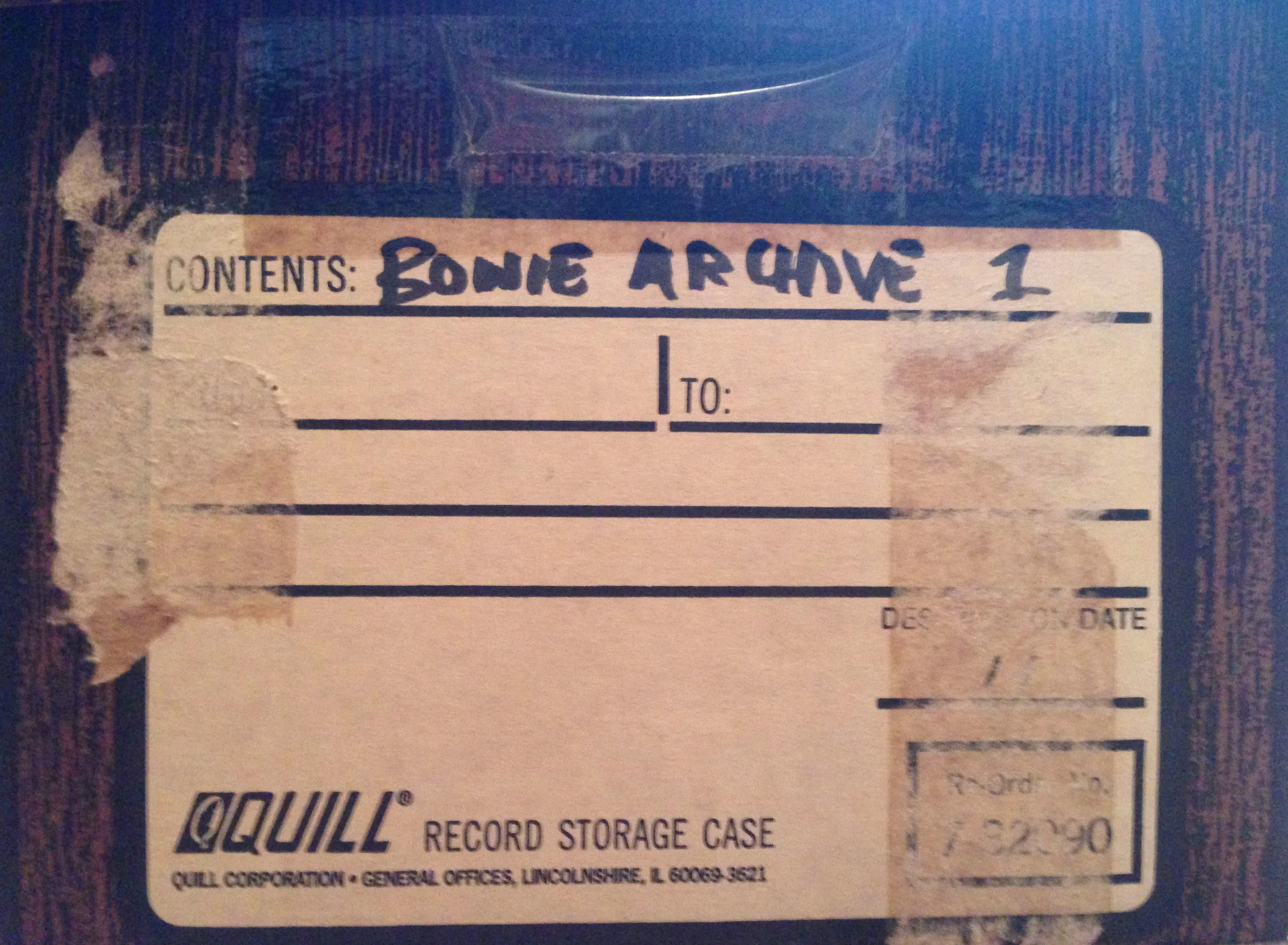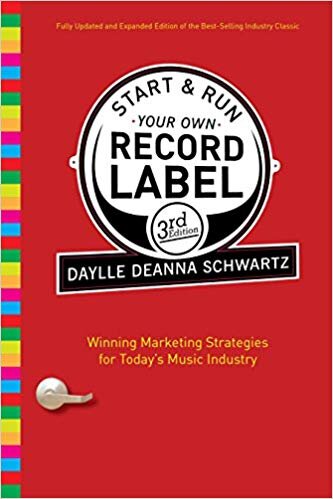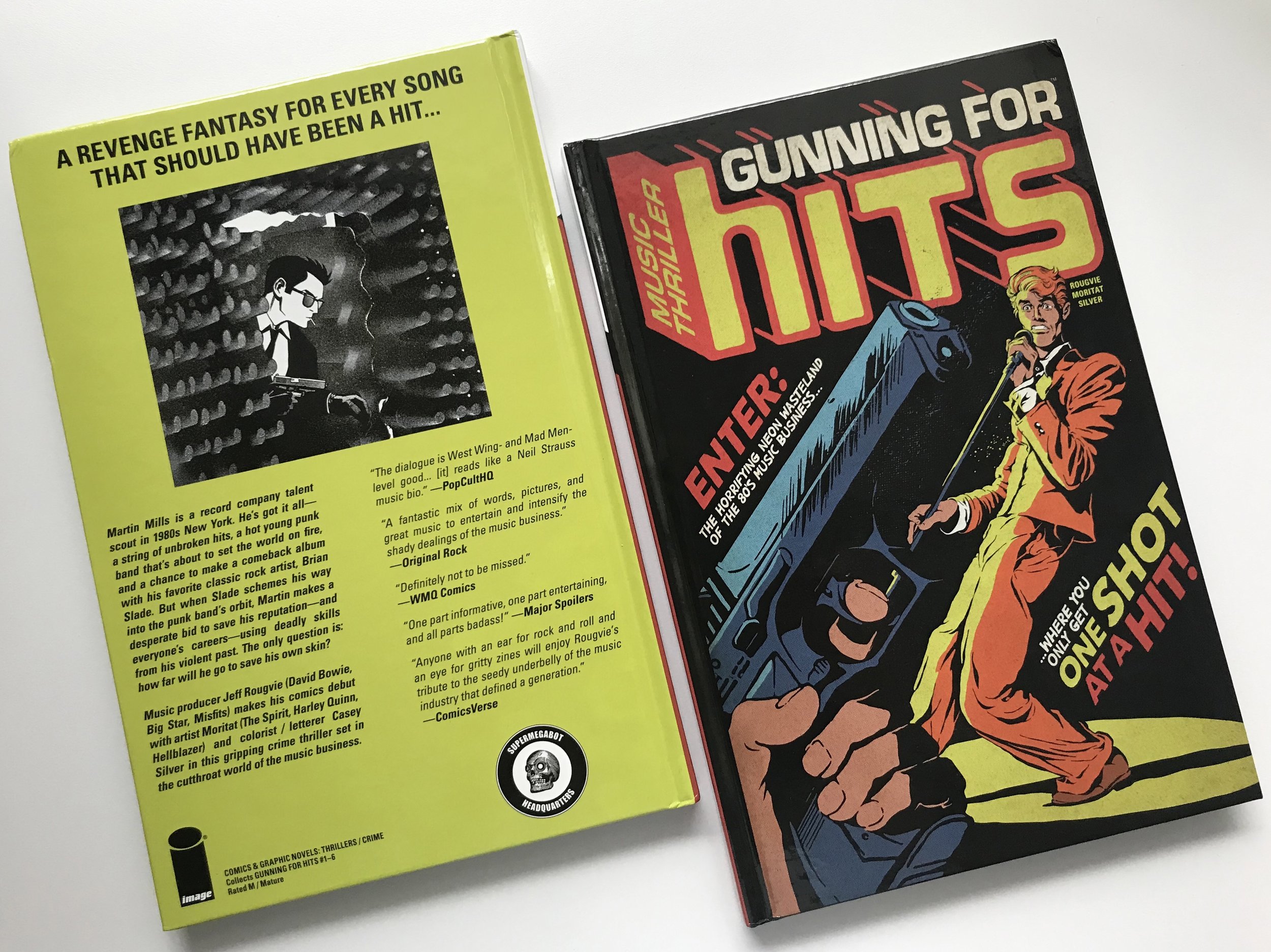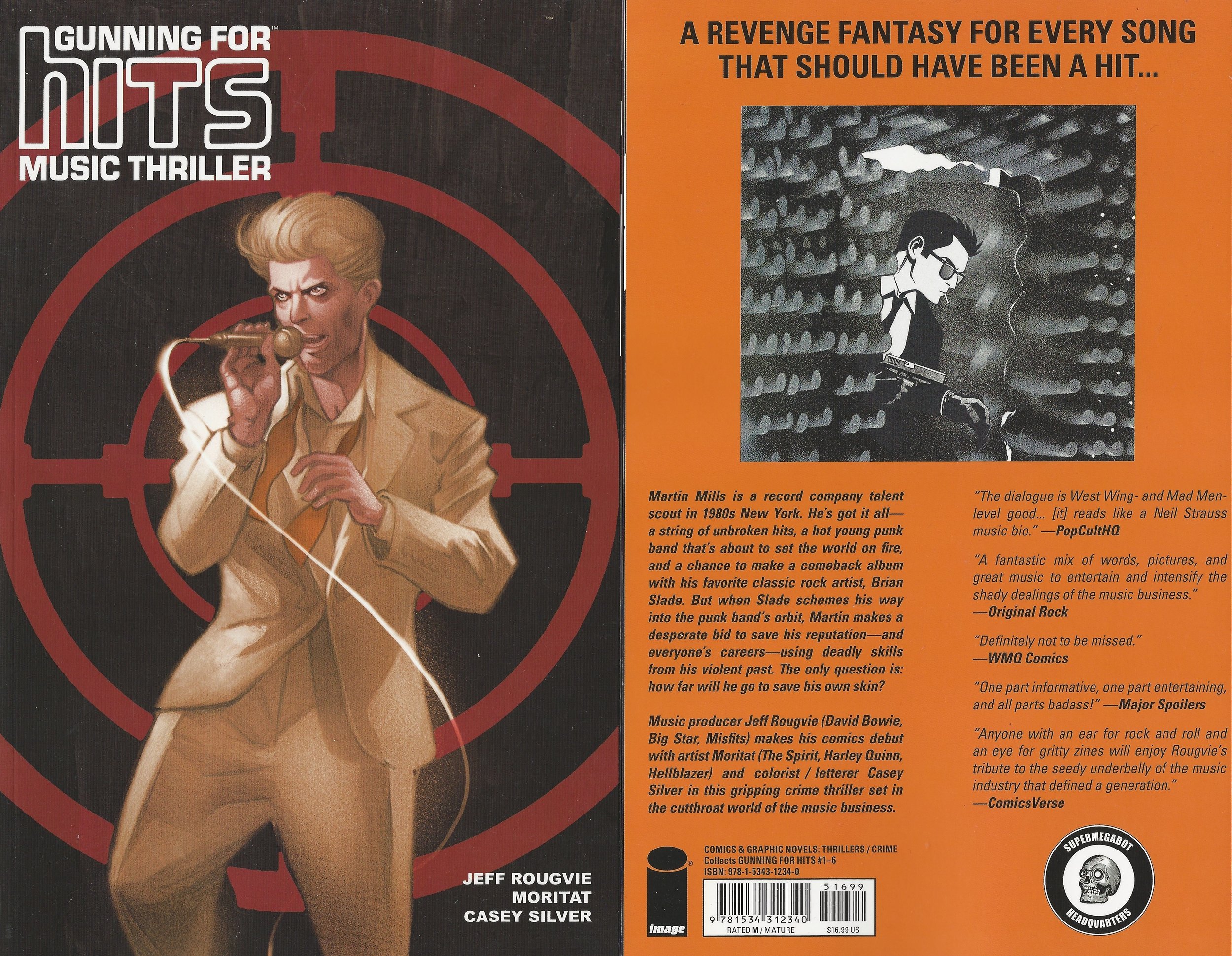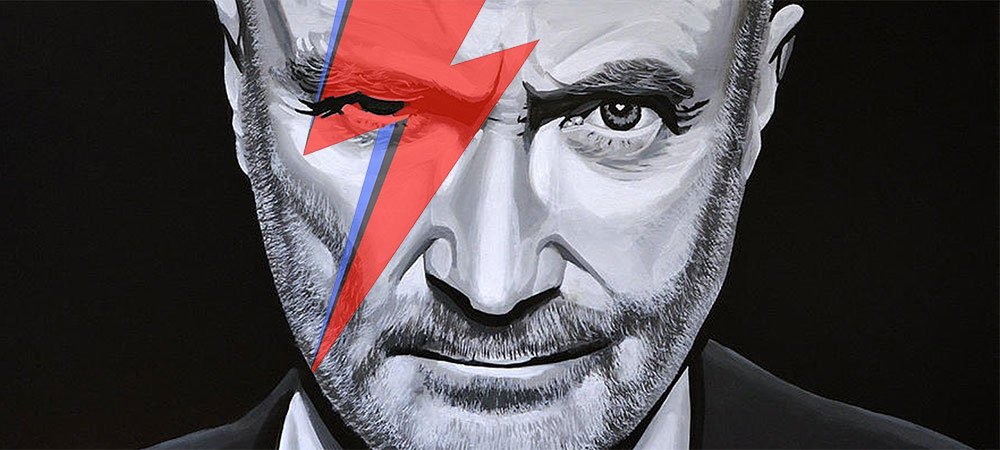Congrats to Steve Pafford for breaking the news about Conversation Piece, with inside info he managed to coerce from a mysterious, connected source. He’s tenacious.
FYI, Rykodisc invented the CD box set product shot.
If you haven’t read his post, head HERE.
While Bowie fans have logically been expecting the traditional announcement of the next annual volume in Bowie’s illogical but chronological career-spanning box series - presumably the long-discussed Tin Machine set - plans have (obviously) changed.
There are loads of rumors about the Tin Machine box, so I’ll address that first. As many of you know, the first TM album was funded by a very generous grant from DB’s lucrative EMI deal. Therefore, EMI most likely paid the same enormous advance they would’ve for the “Let’s Dance 2” album they wanted him to deliver. EMI were so disinterested in TM they tried to make Rykodisc patsies for it’s predetermined sales failure and their resulting dissatisfaction with Bowie. I think they were looking for reasons to cut him loose (which they did, later that year). Bowie took one for the Tin team (and paid for it, both literally and figuratively). Tin Machine was effectively funded by Bowie himself, its advance no doubt cross-recoupable against his other EMI income and debts.
So, although TM was presented as “an equal partnership,” DB owned/owns that first album in whole. They couldn’t have made and released it without his patronage (someone should’ve made sure it came out through SubPop). To David’s credit, when Tin Machine signed a new deal, the copyright info at least would suggest that the band shares ownership of TMII and OV,B.
It’s possible there’s some further proportional drilling down to be done in the minutiae of their contract, but let’s assume they all own an equal stake of the non-EMI masters and the income derived from them.
So where’s the box, which Reeves Gabrels has been quoted as working on in recent years? Pafford quotes Hunt Sales regarding a disagreement on financial terms of the box. Surely that was covered in the original deal? If Hunt is to be trusted, either someone is trying to renegotiate or Hunt is out of order. Both are possible, but neither will get this dubious artifact released.
Much like the remix of “Never Let Me Down,” I don’t imagine a box set re-evaluation of Tin Machine the band will make the music any better, no matter how many demos and live tracks they throw on. Will it fit on your shelf alongside the other boxes? Yes, one assumes, and in my view, that’s the primary reason for it to exist. Of course the second and third TM albums should be readily, legit available, but I can do without all the hand-wringing analysis a new box will bring. Yes, the band was better live than on record, but all the damn songs overstay their welcome, as the (now-on-Spotify) 8-song set from Paris proves in gory detail. The fact that those tracks have made it to streaming when they clearly belong on a TM box indicates someone has grown impatient waiting for the appropriate place to live.
No matter what, the Tin Machine box, by virtue of being “it’s own thing” can easily be skipped until whatever is slowing it down gets resolved.
I’m guessing we’re all more interested in the next set (if there IS one, more on that later) which would at least (presumably) get into the weeds of “outside. 1.” I’m not sure you’ll like what we find there, but the greatest potential horror of this theoretical post-TM 90s box is the discovery and inclusion of even more remixes from “Black Tie” – the blood positively runs cold.
Don’t forget – it’s been implied these sequential boxes were approved by DB before his passing. I doubt this is true; he wasn’t one to wallow in the past and I’m guessing he’d have even less patience for such things when he was running out of future.
I wrote in a previous post about the expensive and unwieldy demo releases fobbed at fans lately. I assumed they were most likely driven by copyright issues rather than a desire to make them public. No doubt copyright is a factor in all of this, so let’s not dismiss it.
Zzzz
Now we’re getting “Conversation Piece,” a box with all that mess and just enough “new” material to make the fanbase buy it all AGAIN. Poor completists – even if you’re just trying to maintain a cohesive library of all released music in one format, no one is making it easy – or reasonably priced - for you.
Sidebar; the Space Oddity Visconti remix seems absolutely superfluous and tagged on. Visconti and I barely interacted, but it was always friendly, so I have no axe to grind with him. That said, he’s older (the Sound + Vision box turns THIRTY soon) and human hearing degenerates with time. Technology has improved so you can likely coax more from the multi-tracks than you could in ’66, but just because you can, doesn’t mean you should. I don’t begrudge Tony taking the job (or even putting his name on it, if that’s all it is), but really, who cares about a contemporary polish of this record in particular? The charm of the music is somewhat tied to the limitations of the era it was born in and the memories associated with HOW IT SOUNDED THEN.
To wit; Bowie and I discussed the disconnect between his recollection of the ferocity of Ronson’s guitar on Ziggy and the actual sound on the multi-track tapes. David badly wanted to try to make it sound the way he imagined it (no doubt leading to the remix we got in 200?). I even proposed a solution that he was intrigued by, but never followed through on. It involved another musician recording additional guitar tracks, and I convinced David I had the right man for the job, although I never contact this guitarist because our rights were due to expire. If Ryko had held onto the rights, I’m sure it would’ve happened, and I imagine it would’ve met David’s expectations without radically altering the album. More about that in the upcoming Ryko book, but my point is DB wanted to “fix” Ziggy – he never once mentioned fixing any other album besides “Never Let Me Down.”
An example of what can happen when remixes go wrong
Going slightly further off-topic, in a Pafford post about Boys Keep Swinging and I Pray Ole, he quotes Visconti, who says he’d been approached about the “Sound + Vision” box a year or two prior to its release. This is untrue, and I put it down to foggy memory on Tony’s part. Just to be clear, we signed the deal in Spring of ’89, the box came out in September. Due to time constraints, the track list was assembled by David and myself only. Note this was during the Bowie / Visconti “freeze-out.” They weren’t talking and I suspect I wouldn’t have been allowed to reach out to Tony anyway.
Back to catalog theory! I’ve said this before; the Estate and Parlophone know exactly what the pain/$$$ threshold is for hardcore Bowie fans – the world is so data-driven, we’re foolish to think otherwise. Pafford notes the label is already in production on any boxes by the time they announce them (as they must be, especially with so many moving parts), calculating sales projections based on previous data in order to determine budgets, production lead time, etc.
Pafford also reports the Estate renewed its deal with Parlophone THIS YEAR. If accurate, it’s quite notable inasmuch as the previous renewal was reportedly a mere two years ago. The prior renewal was five years before that. There’s no reason to think a new deal is any longer than two years, except Pafford also hears Parlophone are planning more boxes in line with “Conversation Piece,” built around albums, not eras, running into the ’74 period, which I doubt they could assemble & release in two years, never mind convince fans / retail to ingest them at that rate.
Till now, the length of the term has been contracting, which makes sense. At some point, Parlophone will be less useful to the Bowie Estate than the Estate is to Parlophone, who’ve profited a lot since David passed.
Here’s where it gets interesting; from a source close to Bowie, via Pafford a few years back; “The accountants are saying that the catalogue has sold well enough for David not to need to plunder the vaults… A lot of it he plans to hold back till the contract expires, and use as collateral to sell the catalogue again. And then there’s the stuff he only wants to be heard posthumously…”
We’re there. I imagine there was no hard date for this to happen, just “sometime after his death.”
Milking the catalog to bleed the fans is a strategy at least partially employed due to a music business with no endgame. Labels are rolling in advances from streaming services now, but at some point there will only be one or two of them (Amazon, duh) and the lack of competition will drastically reduce those big advances because there’ll be no competition.
The vinyl “boom” - if you can call it that – is over. In the big picture, it was a tiny blip. Vinyl sales never got close to overtaking CDs. There are fewer retailers carrying physical product, so that whole side is contracting, just as Bowie’s fans are, erm, graying.
Yes, I know there are teenage Bowie fans who are just as ardent as the olds, but let’s be honest. The mature fans are the ones shelling out $60 for one LP of demos they’ve had CD bootleg of for nearly 30 years. They are the ones who’ll buy “Conversation Piece” even though they already own 80% or more of it. But mature fans are downsizing, out of their prime earning years, and worse, dying.
And there’s that copyright issue.
In other words, a perfect storm of leverage is making it necessary to “maximize the assets,” and with haste.
Every renewal requires an advance be paid to the Estate, and it needs to be significant for them to re-up. It seems the most recent renewal was the one where it made sense to open the vaults in order to jack up the advance price. Parlophone‘ s hands have been very much tied previously – which is why many Ryko bonus tracks weren’t part of their campaigns.
Now we’re getting “I Pray Ole’” again, probably a “Sound + Vision” live album and tons of ’69 vault stuff, with the promise of similar releases for each album through ’74 (per Pafford). I imagine these overpriced silly formats leading up to “Conversation Piece” are part of a scheme to recoup that advance as quickly as possible, while there’s still a market for physical (and even digital!) sales, versus the (comparatively) minimal streaming income (please note Bowie-specific streaming income is very different from general advances paid to a label for the licensing of their overall catalogs).
Bowie’s “vanilla” catalog generates respectable income without rarities; he was told to wait for the right paycheck before unlocking the vault. In particular, film & TV licensing – a big source of revenue as physical sales decline - relies on the familiar recordings. No one is licensing the “Spying Through A Keyhole” version of In The Heat Of The Morningfor a major motion picture; they still want the hits – and the hits are being licensed freely, generating money for both the Estate and their label partner. The Estate used to, and I presume, still does, sign off on all licensing deals via RZO. The Estate and RZO could easily become a standalone Bowie label if they wanted to, as I presume they ultimately will.
The only reason to have a label at this point is to get advances and manage the dreary chore of shuffling around physical product until such time as it’s no longer financially viable (TBD). You could argue the label also does marketing, but I’d bet the cut the Estate gives up to the label is likely more than the cost of hiring their own publicists – and they probably already have some on the payroll.
Since the last “80s era” box, we’ve had an expensive 7” box set (not enough material for an LP) and an LP (priced like a box set) that they absolutely knew fans would feel compelled to buy. It is, after all, the first truly “new” vintage material released by any post-Ryko label since All The Young Dudes illegally appeared on a dubious comp back in ’95, and then legally in 1997.
I’d theorized they were trying to keep the material on the DL, by putting it in useless formats at exorbitant prices- but with the announcement of “Conversation Piece” that theory’s clearly wrong.
Shortly after David died, I envisioned a day when, as David said, “copyright will be meaningless.” The Estate, warned by its creator, had taken back the catalog. On that day, when no more money could be gleaned from distribution of songs, all the vault material would be released to the internet for everyone to hear - for free – inspiring a totally new look at the artist and how he worked, what he held close and what he released, where he succeeded and where he failed.
It seemed like a very Bowie thing to do, but so does making as much money as possible (and I don’t say that as a negative) from the catalog before his premonition becomes reality. I just wish they’d do it in a less predatory manner; it’s beneath his memory.
In the meantime, watch your pocketbooks, completists. You are squarely in the sights of the gatekeepers of this material and I fully expect oddball drips and drabs of material every year until it’s finally all collected in one common-sense package. Have patience.
